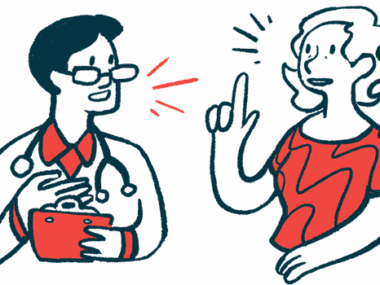Soticlestat trial narrowly misses main goal, but findings promising
Secondary measures show treatment outperformed placebo
Written by |

A Phase 3 clinical trial testing soticlestat in people with Dravet syndrome showed that patients given soticlestat tended to have fewer seizures than those given a placebo, but the difference did not quite reach statistical significance, so the study missed its main goal.
While the treatment didn’t meet the SKYLINE trial’s main goal of overall seizure frequency, soticlestat did significantly outperform a placebo in secondary measures including seizure intensity and duration scales, as well as caregiver- and clinician-rated measures of improvement.
Top-line data from SKYLINE were announced by soticlestat’s developer Takeda Pharmaceuticals. The company said it will engage with regulatory authorities to determine next steps for the medication’s development.
“While we would have wished for more declarative results on the primary endpoints, we are encouraged by positive outcomes seen in the totality of the data and are looking forward to engaging health authorities to determine the best path forward,” Sarah Sheikh, head of global development at Takeda, said in a company press release.
The Phase 3 SKYLINE trial (NCT04940624) enrolled 144 Dravet syndrome patients, ages 2 through 21. Participants were given soticlestat or a placebo, taken twice daily by mouth or feeding tube at dosages based on weight, on top of standard-of-care treatments.
Likelihood of random results just above threshold for significance
The study’s main goal was to see if patients given soticlestat would have significantly fewer seizures over 16 weeks. In statistics, saying that a difference is significant means that the difference is almost certainly not due to random chance. To measure this, scientists calculate a measure called a p-value, which is an estimation of how likely it is that the results could be random chance.
Generally, results from trials are considered significant if the p-value is 0.05 or lower, meaning the chances the results are random are 5% or less. Results from SKYLINE showed there tended to be fewer seizures in patients given soticlestat, but the p-value was 0.06. That suggests there’s a 6% chance the results are random, which is low, but not low enough to be considered statistically significant.
Several secondary measures did significantly favor soticlestat over placebo, however. These included the overall responder rate, measures of the intensity and duration of seizures, as well as measures of response completed by caregivers or clinicians. Across all these secondary measures, p-values were 0.008 or lower, meaning the odds the difference is random is less than 1%, well within typical bounds for statistical significance.
Takeda did not provide specific figures for these measures, though the company said the effects are substantial enough that they would be meaningful for patients.
Along with the results from SKYLINE, Takeda announced findings from a separate Phase 3 study called SKYWAY (NCT04938427), which tested soticlestat against a placebo in people with Lennox-Gastaut syndrome, another disorder that’s characterized by seizures in childhood. That study also failed to meet its main goal.
Across both Phase 3 trials, soticlestat was generally well tolerated, according to Takeda. The company didn’t provide specifics, but said the overall safety profile was consistent with other studies of the therapy.
“We are grateful to all the participants and their families, as well as investigators and clinical staff for their participation in these important studies,” Sheikh said.
Soticlestat is designed to block the activity of an enzyme in the brain called CH24H. This enzyme normally helps control the activity of glutamate, a brain signaling molecule whose abnormal activity is thought to contribute to seizures in Dravet syndrome and other disorders.
Soticlestat showed positive results in a Phase 2 study called ELEKTRA (NCT03650452) that tested the therapy against placebo in children with Dravet or Lennox-Gastaut syndrome. Interim data from an ongoing extension study called ENDYMION 1 (NCT03635073) showed most patients who stuck with the therapy long-term experienced marked reductions in seizure frequency.
Takeda said it will review data from all these trials during its discussions with regulatory agencies to determine the best path forward. The company also noted it will present detailed results at scientific conferences in the future.







